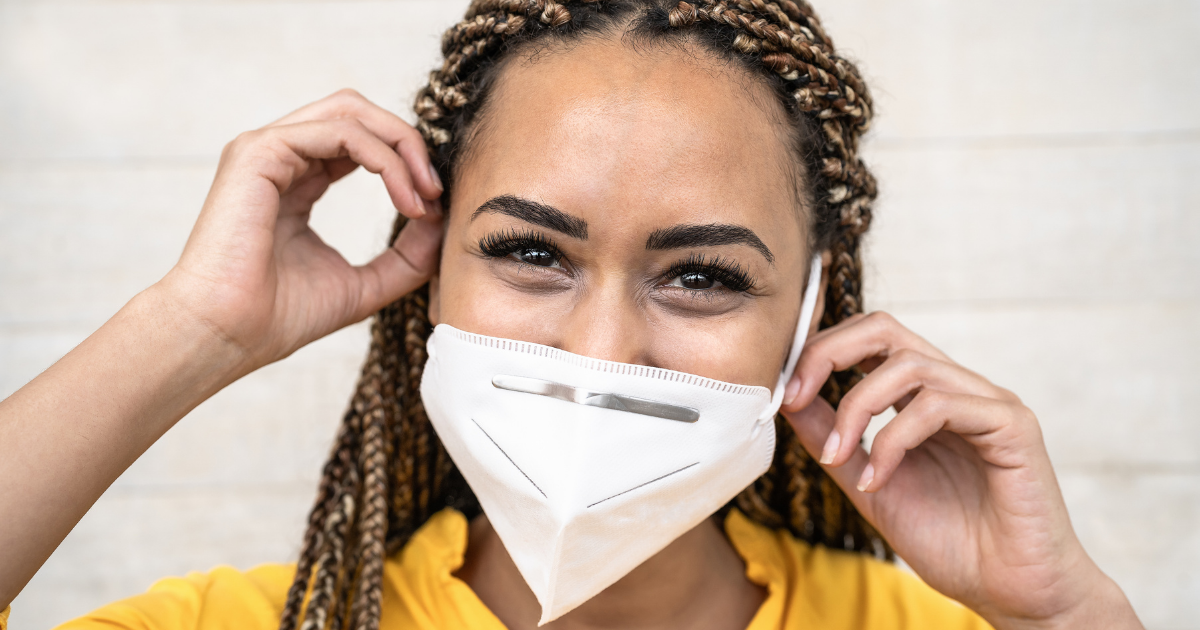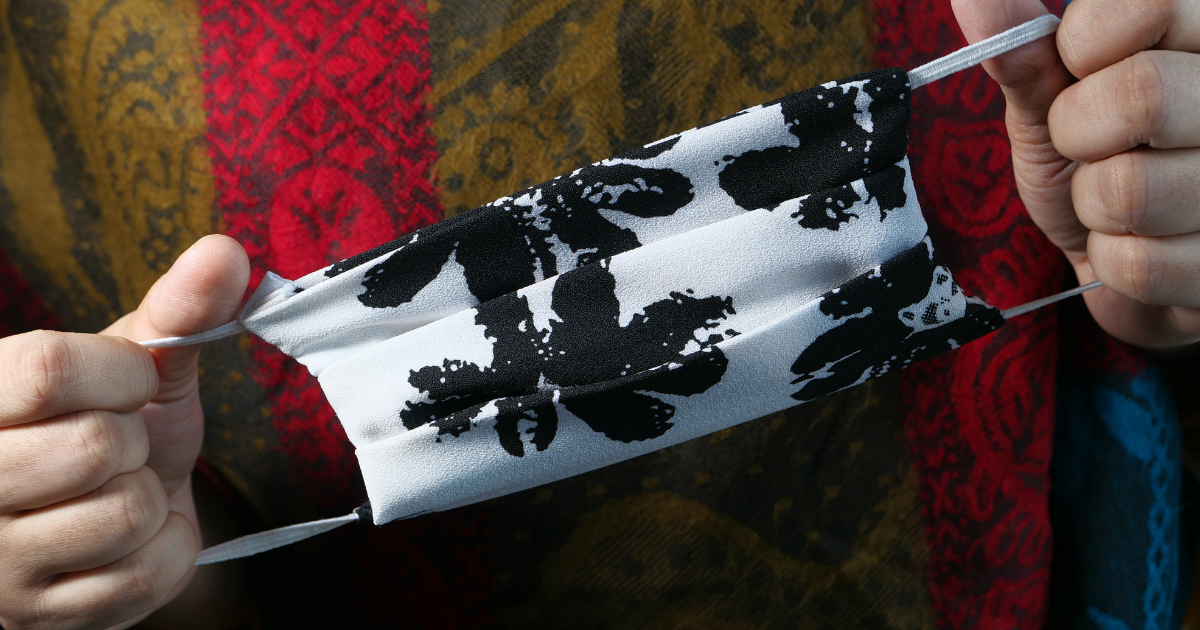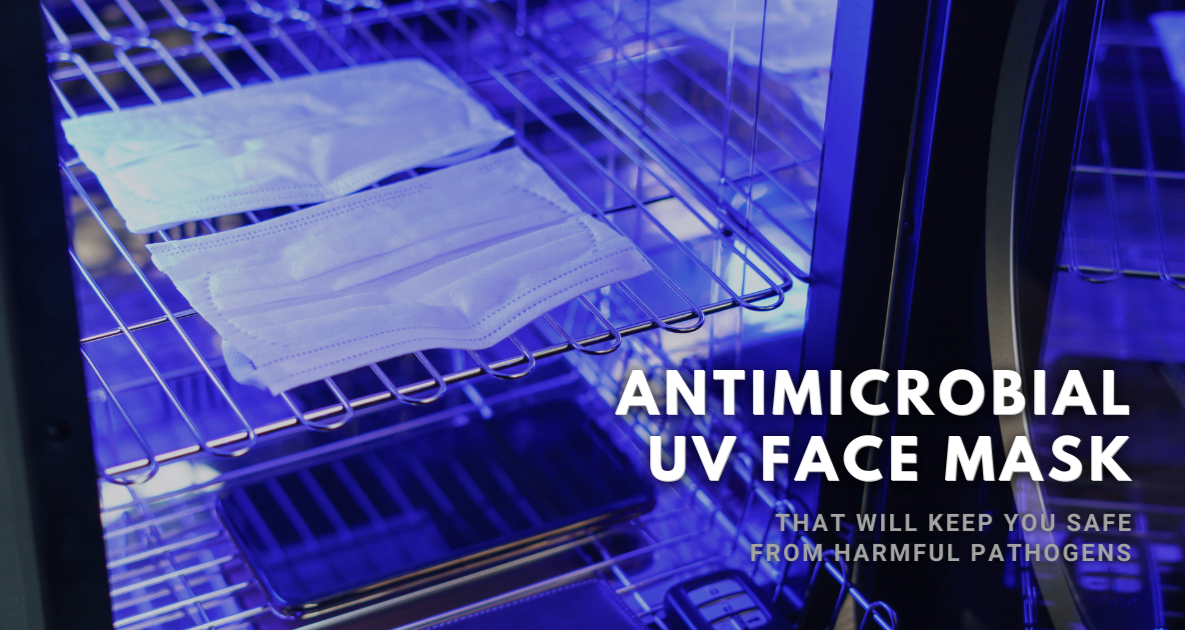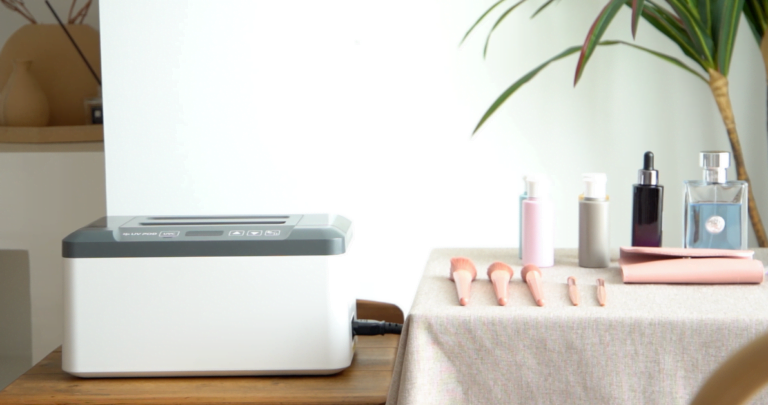Antimicrobial face mask? Introducing the first-ever UV face mask that will keep you safe from harmful active pathogens
Will the first antiviral UV face mask keep you safe from harmful pathogens?
Wearing an antimicrobial face mask is vital to avoid the coronavirus. Coronaviruses are incredibly contagious and can spread through saliva, coughs, or sneezes. If you come into contact with the virus, it is possible for you to get infected. Wearing a face mask will help protect you from this contagious virus.
The UV Mask will keep you safe from harmful pathogens. It is a new product that comes with a dual filtration system and has the cleanest air quality of any existing facemask. The UV mask will protect you from 99% of all airborne viruses and bacteria.
Keep reading to learn more!
Historical epidemics and pandemics
A pandemic is an epidemic that affects people over a large geographical area, with a disproportionately high number of cases in comparison to a more limited population. The most famous and deadly pandemic in history is the Spanish flu, which originated from birds and killed 50 million people.
The global pandemic could be triggered by a combination of factors, such as the increasing number of people in urban areas. There is no specific pattern for when these epidemics happen; they can happen at any time and affect many different countries simultaneously.
The Spanish flu was a fatal influenza pandemic, with a fatality rate of 20%. It is estimated that it killed between 50-100 million people worldwide. It is the perfect example of what can happen when a pandemic isn’t addressed quickly. People today need to take care and stay protected with our new UV face mask. This revolutionary product will keep you safe from harmful pathogens and help us all stop the spread of Covid-19 and all of its existing variants.
The impacts of epidemics and pandemics in socio-economy
When epidemics and pandemics occur, they can have a significant impact on the socio-economy of any given country. They are contagious diseases that spread rapidly. It is difficult to stop these diseases because they can be transmitted through air, water, or contact with an infected person.
The effects of epidemics and pandemics are devastating for the population that is affected by them. They can cause death, disability, or disease. They also have a considerable impact on the economy of any country because they increase the cost of medical care and decrease productivity in workplaces. The spread is also costly to the government that has to spend money on public health measures and services.
Role of face mask in preventing the spread of infectious diseases
The CDC recommends that people should use a face mask when they are around sick people to help prevent the spread of infection. A person with an infectious disease may have droplets in their mouth or nose that are very small and can travel through the air. These droplets may contain viruses, bacteria, fungi, or other infectious disease agents.
Wearing a mask will protect you from the droplets in the air that may contain infectious agents. A mask also protects you from droplets that are created when a person that has an infection coughs or sneezes. Masks also help to prevent the spread of infection when a person is infected but not sick enough to be considered contagious.
A person with an infectious disease may have droplets in their mouth or nose that are very small and can travel through the air. These droplets may contain viruses, bacteria, fungi, or other infectious disease agents. Wearing a mask will protect you from the droplets in the air that may contain infectious pathogens.
It may seem like a mask is preventing you from taking in any air, but the truth of the matter is that it does not cover your nose and mouth. You will still be able to breathe while wearing a mask.

Evolution of face mask
The face mask is a protective barrier that covers the nose, mouth, and eyes. The masks first appeared back in 1885 when they were made out of rubber or silk to prevent tuberculosis patients from spreading the disease. In 1918, a mask was created that consisted of two pieces that connected at the nose and hung down to cover both sides of the mouth to prevent influenza transmission. Plastic masks were first created in 1928, and they were used to protect patients from the deadly swine flu. In recent years, masks have been created to help with other diseases that are transmitted through contact or droplets like SARS, Ebola, and more.
Antimicrobial face masks
Antimicrobial face masks are a type of mask that is used to prevent the user from being infected by bacteria or other pathogens. There are many different types, but most have some form of antimicrobial protection.
There are different types of antimicrobial face masks, but most have some form of antimicrobial protection.
Metal and metal oxides
Metal and metal oxides are solids that react with water to form acids. The metals in the compounds could be copper, zinc, or nickel. Zinc is often used because it has two reactive forms, zinc oxide and zinc carbonate. The metal oxides are often used as a catalyst in chemical reactions or processes that produce gases.
Antimicrobial polymer
Antimicrobial polymers are often used in the medical field as they can be easily inserted into wounds to help prevent infection. They are effective because they release an antimicrobial agent that kills bacteria.
A common antimicrobial polymer is a silver sulfadiazine. This material disrupts bacterial cells by preventing them from using the protein cytochrome c oxidase, which they need to create energy. In addition to being an antimicrobial polymer, silver sulfadiazine also has a remarkable ability to prevent infection from spreading. Silver sulfadiazine is used as a topical ointment for a number of skin infections, including burns and ulcers.
Natural compounds
The natural compounds in a face mask can be used as an antimicrobial to fight off bacteria and other pathogens that may enter the body. This is because these substances are typically not harmful to humans but rather to bacteria and other pathogens. One common natural compound in a face mask is honey, which has been shown to have antimicrobial properties against many different types of bacteria, including some strains of E. coli, S. aureus, and P. aeruginosa (Patel et al., 2008). Other natural compounds such as apple cider vinegar have also been shown to be antimicrobial in a lab setting (McCullough, 2006).
Miscellaneous agents
A miscellaneous agent antimicrobial face mask is primarily used to protect the wearer from respiratory illness or infection that can be transmitted in droplets when coughing, sneezing, or breathing. It also protects the wearer from exposure to some airborne particles, chemicals, or biological materials that may be present in any given setting.
Market potential of face masks
Face masks are used for a variety of reasons. The most common reason is to prevent the spread of germs and bacteria that cause illnesses like colds, influenza, or food poisoning. This is especially important for people with compromised immune systems, like cancer patients or those who are HIV-positive. Some face masks are designed to protect the wearer from breathing in fumes generated by paint thinner, acids, or other hazardous substances. Others are designed to keep out dirt, dust, and pollen when hiking in the woods on a windy day.
The market for face masks is expected to grow by 8.1% annually during the forecast period of 2017-2023, with a total value of $6.7 billion in 2023. A total of 7.5 billion people around the world wear a face mask at least once in a typical year, and 60% of them do so to protect themselves from airborne pollution. The need for protection is especially high in Asia, where many people wear masks to protect themselves from the H1N1 virus.
Demand is expected to be driven by factors such as increasing awareness of health and safety issues, growing global demand for face masks as a preventive measure against the spread of respiratory illnesses and colds, and stricter regulations on pollution control.

Possible environmental impacts associated with the usage of face masks
Face masks are an important tool in the fight against influenza and other respiratory illnesses, but it is possible that they can pose some environmental impacts. In order to reduce these risks as much as possible, people can be encouraged to wash their hands thoroughly and frequently, dispose of the masks responsibly, and not share them.
Let’s take a moment just to talk about some of the emerging problems that are being associated with face masks. First off, there have been recent reports suggesting that these products can release particles into the environment. People who wear face masks are less likely to catch colds and other respiratory illnesses because these products can serve as a physical barrier between those people and those pathogens. On the other hand, it has also been suggested that wearing these masks might undermine our immune systems because they impede both breathing and interaction with the environment.
This is a serious issue for those living in crowded areas or for occupations that require a face mask.
What is the difference between a face mask and a respirator?
There is a big difference between the two, but they are related. A respirator is designed to protect against harmful substances or contaminants in the air that could cause health problems if inhaled. Respirators are designed to be used in a specific situation and for a short period of time. They have cartridges that can filter out substances or contaminants, but this is only possible with the right type of substance. Respirators also have a tight seal around the nose and mouth to prevent inhalation of contaminants, while face masks will only cover the nose and mouth area.
The most significant difference between a respirator and a face mask is the protection factor. Respirators offer more extensive respiratory protection than face masks, which only cover the nose and mouth area of your head.
Which one should you use?
A respirator is not always necessary for protection against airborne contaminants. For example, if you are painting your home with oil-based paint, a face mask will work to protect you from the fumes. A respirator is designed to protect against particles that may be in the air, like dust or pollen. A face mask will not work for this type of protection because it only covers your nose and mouth.
Types of facemasks that work against Covid-19
There are many different masks that you can choose from. Each varies in comfort and level of protection offered. Read below to learn your options:
Cloth masks
Cloth masks are not as effective as other types of masks because they can’t filter all the particles that a paper or surgical mask could. Cloth masks have been shown to reduce exposure by only about 20%. There are two types of cloth masks; fabric and paper. Fabric masks have been shown to be less effective than other options because particles can get through the holes in the fabric, while paper masks are more effective because the paper can’t get holes.
Disposable masks
The masks are made of a thin, elastic material that is shaped to fit over the nose and mouth. They can be used once or twice before they need to be replaced. The mask may not protect against droplets from a cough or sneeze which contain the virus, but it’s an effective barrier against breathing in dust and other particles that may carry viruses.
Disposable masks are used to prevent the spread of viruses. They can be worn once or twice before they need to be replaced and protect against dust, but not droplets from coughs and sneezes which carry the virus.
Masks that meet a standard
The Centers for Disease Control and Prevention (CDC) has developed a standard mask that meets their criteria in order to help protect people from these diseases. The CDC recommends that people who are exposed to these particles should wear these masks.
Respirators
A respirator is a device that covers the mouth and nose, usually to filter out particulate matter such as dust or other air pollution. There are three types of respirators: half-mask, full-face, and tight-fitting. The most common type of respirator is the half mask that covers your nose and mouth.
The three types of respirators are a half mask, which covers your nose and mouth; a full-face respirator, which covers the entire head but may not be appropriate for some people with glasses or facial hair; and tight-fitting masks, which are often used by healthcare providers for protection from viruses.
The most common type of respirator is the half mask that covers your nose and mouth.
NIOSH-approved respirators
There are many different types of respirators, and each one is designed for a specific purpose. For example, there are N95 masks that can be used to protect against particulates such as dust or asbestos, and there are P100 masks that can be used to protect against substances that may contain oil-based particles. The N95 respirators come in two types: half facepiece and full facepiece. The main difference between the two is that a half-facepiece respirator covers only the nose and mouth, while a full-face mask also includes protection for your eyes.
Overall, there are many types of respirators available to protect you from various harmful substances. However, the only way to be sure is by wearing an appropriate mask for your situation!
UV Antiviral Mask
UV Antiviral Masks are designed to protect the wearer from airborne viruses and bacteria. The masks can filter out most allergens, such as pollen, pet dander, and dust mites.
UV Antiviral Masks are made from a variety of materials such as fabric, plastic, and metal. They can be worn with or without eye protection, depending on the wearer’s preference.
UV Antiviral Masks are available in a variety of sizes and colors to suit individual tastes. They can be custom-sized for an accurate fit using scissors or shears and can be washed by hand or in a washing machine.
UV Antiviral Masks are available at select retailers around the country and online.

Which masks are best to protect against Covid19-?
The best masks to protect against the flu are those that cover your nose and mouth, like a surgical mask or an N95 respirator. The CDC recommends staying home if you have symptoms of the flu and getting a flu vaccine.
Can you clean the N95 mask with UV light?
UV light can help kill bacteria and viruses on the surface of a mask. However, it is not recommended to clean masks with UV light as this could shorten the life span of the N95 mask.
Are level 3 masks medical grade?
Yes, level 3 masks are medical grade. However, they do not provide the same protection as an N95 mask because of their lack of seal and fit on one’s face.
How long can face masks be worn and remain effective?
The masks can last up to six hours, but they should be replaced after that time.
Do UV antiviral masks protect against other viruses?
No, they only provide protection from Covid19- and not other viruses. The UV Antiviral Mask is the first-ever antiviral face mask that will keep you safe from harmful pathogens!






